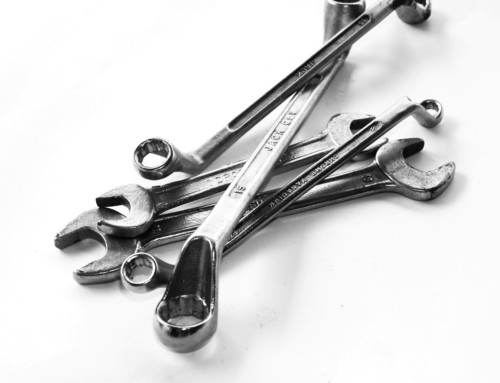Enabling Storeroom Success Through Data
 How often does your facility run out of raw materials? Chances are it is not very often, if ever. Why is this? It may be because the organization has invested heavily in gathering the right data, analyzing and developing contracts for the materials. This prior work ensures a steady supply of materials.
How often does your facility run out of raw materials? Chances are it is not very often, if ever. Why is this? It may be because the organization has invested heavily in gathering the right data, analyzing and developing contracts for the materials. This prior work ensures a steady supply of materials.
So why is it that within the same organization there is virtually no data to support the spare parts? Not having a spare part can dramatically impact an organization in the same way as not having raw materials. The result is no production.
Data is vitally important to any storeroom and spare parts management program. Without data, the organization is at best guessing and the success of the organization depends on that guess.
Why is Data so Important?
Data is the lifeblood of any maintenance & reliability program or process. And that includes the storeroom. Only with proper data can organizations develop the right information to make decisions. Without the quality data, excess parts may be stocked, or not stocked at all.
In addition, you need quality history which comes with good data to optimize your spare parts holding. Quality data in spare parts comes in a variety of different formats.
Types of Data
When an organization thinks of data, they may think of only costing history or lead time, but in fact, there are many different types of data used in spare parts management.
- Taxonomy – A basic classification system that enables the conceptual identification of hierarchies and characteristics. A basic taxonomy will identify how to name parts, what groups or categories to place the part into, and what characteristics to document for the part.
- Logistics – Is the basic data that identifies how and when the part will be transported to the site. Logistics data includes the average lead time, the max lead time, how it will be shipped and where the nearest distribution center is.
- Pricing – Is more that just the price of the part. It includes the current price, future price, bulk discounts, expediting costs, and the cost of holding the spares.
- Life – Is understanding the life of the part. This could include storage requirements, expirations, or maintenance requirements.
- Historical – Historical data is all the pricing and order history, combined with all material movements such as issues, returns, dispositions, etc.
Each of these data types plays a unique role in establishing a high functioning spare parts program. Now that there is an understanding of the types, we need to understand how to collect the data.
How to Collect the Right Data
Spare parts data is often not properly recorded or at all due to a few reasons. Firstly, it can be time-consuming to gather. For example, if you are adding a piece of equipment to the facility, that equipment may have 1000 individual SKUs to add to the CMMS. For each of these parts, you will have to cleanse the part to the established taxonomy, check to see if it already exists gather price and lead time from the vendors, and then evaluate the stock levels for each. Often times organizations will just use the OEM recommendations, which is not always the best way to go.
So how do you collect the right data? Partner with vendors. When you partner with vendors, they will be likely to do bulk quoting and return it to any format you wish (including a spreadsheet). This allows for a direct upload of specific data fields to the CMMS. The another option is to establish a partnership with procurement or to establish a gatekeeping process (which we will discuss in a later post).
Having the data is only one part of the equation. It is vitally important to ensure the CMMS is configured and setup to record the all of the required data fields. Often times CMMS’ are configured in a way that requires all attribute data o be record in the notes section. This prevents the data from truly being utilized.
How to Maintain the Data
Once all the data has been collected and existing data brought up to standard, it is mandatory that a governance process is implemented. The governance process is a method of ensuring all materials added to the CMMS meet the minimum data requirements. It also provides a method for reviewing existing data and changes to ensure the taxonomy is applied.
Included in the governance process is the restriction of access to edit the material master records. Ideally, the editing and creation of material masters are restricted to a few individuals separate from the individual storeroom. By having them separated, they will not be pressured to bypass the gatekeeping process.
There may be organizations that will not order a part without a CMMS part number. This is a great policy but can cause some issues when trying to maintain data integrity. Therefore be sure to have a process in place that will provide a part number quickly in these situations, but has a follow up a mechanism to bring that data up to standard.
So I must ask, do you have data standard in your organization? Is it applied to every part of your organization? If not, why?
Next week we will cover the how to manage the stocking of the spare parts. Otherwise known as the gatekeeping process.
Remember, to find success, you must first solve the problem, then achieve the implementation of the solution, and finally sustain winning results.
I’m James Kovacevic
Eruditio, LLC
Where Education Meets Application
Follow @EruditioLLC
References


